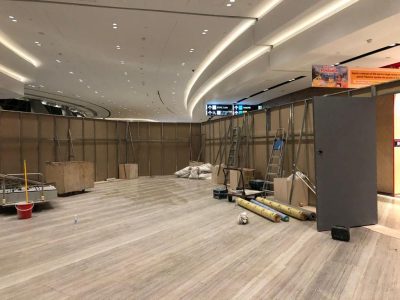If you’re starting a new business in Singapore or upgrading your current office, a well-planned fit-out construction project can make the difference between a workspace that drives productivity and one that drains your resources. In Singapore’s competitive commercial property market, understanding the fit-out process and the different types of fit-outs available will help you make smarter decisions and avoid costly mistakes.
This guide walks you through everything you need to know about fit-out construction in Singapore—from planning and permits to the finishing touches.
What is Fit-Out Construction?
Fit-out construction refers to the process of turning an empty unit or bare building shell into a functional, ready-to-use space. In Singapore, this usually means outfitting offices, retail shops, or restaurants with partitions, flooring, lighting, electrical systems, HVAC, plumbing, and interior finishes.
A well-executed fit-out does more than make your premises look good—it helps you:
Attract and retain talent with modern, comfortable workspaces.
Create a strong brand impression for clients and visitors.
Maximize efficiency with layouts tailored to your operations.
The Fit-Out Construction Process in Singapore
- Planning & Design
Every project starts with a clear plan. This phase involves assessing your business needs, space requirements, and budget, while ensuring compliance with Building and Construction Authority (BCA) codes and other local regulations.
Because Singapore has a tropical climate, special attention must be paid to air-conditioning, ventilation, and humidity control. - Permits & Approvals
Fit-out projects typically require permits from various authorities, including fire safety clearance from SCDF and electrical licenses. Submissions may take several weeks, so factor approval timelines into your schedule. - Demolition & Strip-Out
For renovation projects, old fixtures, partitions, and MEP (mechanical, electrical, plumbing) systems must be removed. In older Singapore buildings, contractors may need to follow strict protocols when dealing with materials like asbestos. - Core Construction
This is where walls, partitions, ceilings, flooring, and other major works are installed. In high-rise offices (e.g., Raffles Place or Marina Bay), contractors must coordinate with building management to minimize disruption. - MEP Installation
Singapore’s standards are strict. Expect detailed inspections of:
Electrical systems (safe load distribution for IT & office equipment)
HVAC systems (energy-efficient aircon suited for humid conditions)
Fire protection systems (sprinklers, alarms, smoke detectors) - Finishes & Handover
The final phase includes furniture, lighting, branding elements, and system testing. Before handover, contractors conduct quality assurance checks to ensure compliance with safety and building standards.
Types of Fit-Outs in Singapore
Shell & Core Fit-Out
The landlord delivers a bare unit with essential building services (lifts, toilets, fire stairs). Tenants handle everything else. This is common in Grade A office spaces like Marina Bay Financial Centre.
Category A Fit-Out
The landlord provides a partially completed unit, typically with:
- Suspended ceilings
- Raised floors
- Basic lighting
- Air-conditioning systems
This is popular in CBD offices (e.g., Raffles Place, Orchard Road), as it provides a cost-effective starting point.
Category B Fit-Out
Tenants customize the space to suit their brand and workflow. This includes:
- Private offices & meeting rooms
- Pantries & reception areas
- Custom flooring & partitions
- Branded design elements
A Category B fit-out transforms a generic office into a branded workspace that reflects company culture and values.
Turnkey Fit-Out
For businesses that want a move-in ready office, turnkey fit-outs cover everything from concept to completion. This option is common among MNCs setting up regional HQs in Singapore.
Key Considerations for Fit-Outs in Singapore
- Climate & Durability
With high humidity year-round, choose materials that resist mold and warping. Proper air circulation and dehumidification are essential. - Green Building & Sustainability
Singapore strongly promotes sustainable design through BCA Green Mark certification. Energy-efficient lighting, water-saving fixtures, and recycled materials are not only eco-friendly but can also lower long-term operating costs. - Space Optimization
Since commercial rent in Singapore is high, efficient layouts matter. Smart storage, open floor plans, and multi-purpose zones can help maximize every square metre.
Choosing the Right Fit-Out Contractor in Singapore
Your choice of contractor will determine whether your project runs smoothly. When evaluating partners, look for:
- BCA-licensed contractors with a proven local track record.
- Experience with similar project types (offices, retail, F&B).
- Strong project management skills to ensure on-time delivery.
- Established supplier and subcontractor networks.
Always request to view past projects and client testimonials to gauge their reliability.
Conclusion
A fit-out construction project in Singapore requires careful planning, compliance with regulations, and the right contractor. Whether you need a simple Category A handover or a full turnkey solution, understanding the process will help you control costs, avoid delays, and create a workspace that supports your business goals.
Remember, your workspace is not just where work happens—it’s a representation of your brand, culture, and future growth. Invest wisely, and your fit-out will pay dividends in productivity, talent attraction, and long-term success.

